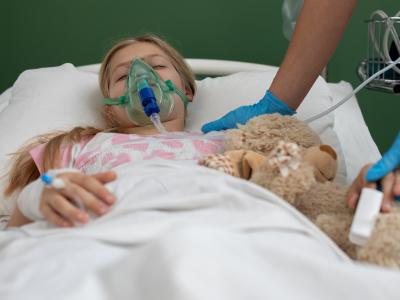Resistance to 3 or more antibiotics in 13% of serious urinary infections
One in eight US patients hospitalized with a complicated urinary tract infection (cUTI) have a pathogen with resistance to three or more routinely used antibiotic classes, researchers reported yesterday in BMC Infectious Diseases.
To assess the prevalence of overlapping resistance to antibiotics commonly used to treat cUTIs and its impact on patient outcomes, the researchers conducted a retrospective study of patients hospitalized with a culture-positive carbapenem-susceptible cUTI using data from approximately 180 US institutions that submitted microbiology data from 2013 through 2018.
Triple resistance (TR) was defined as resistance to three or more common antibiotics: third-generation cephalosporins, fluoroquinolones, trimethoprim-sulfamethoxazole, fosfomycin, and nitrofurantoin.
Multivariable models quantified the impact of TR and inappropriate empiric therapy (IET) on patient mortality, 30-day hospital readmission, hospital length-of-stay (LOS), and costs.
Among 23,331 patients with a cUTI, 13% (3,040) had a TR pathogen. Compared with patients with non-TR pathogens, those with TR pathogens were more likely to be male (57.6% vs 47.7%), black (17.9% vs 13.6%), and located in the South (46.3% vs 41.5%).
They also had a higher chronic disease burden (median Charlson comorbidity score, 3 vs 2) and a higher acute disease burden (mechanical ventilation, 7.0% vs 5.0%; intensive care unit [ICU] admission, 22.3% vs 18.6%). Patients with a TR pathogen were more likely to receive IET than those without (19.6% vs 5.4%).
Although the adjusted outcomes showed that TR was not associated with a rise in hospital mortality or 30-day readmission rate, it added 0.38 days to hospital LOS (95% confidence interval [CI], 0.18 to 0.49) and $754 to hospital costs (95% CI, $406 to $1,103). In patients with a cUTI that was not catheter-associated, however, TR was associated with increased risk of mortality (odds ratio, 2.44; 95% CI, 1.30 to 4.56).
"In summary, we have demonstrated that resistance to combinations of regularly used antimicrobials is prevalent and on the rise in the most common cUTI organisms in the US hospitals," the authors wrote. "Though increasing resistance alone does not impact hospital mortality, it does expose patients to an elevated risk of worsened outcomes through increasing the likelihood of inappropriate empiric therapy."
Feb 8 BMC Infect Dis study
H5N6 avian flu sickens 2 children in China, 1 fatally
China reported two more human H5N6 avian flu cases, one of them fatal and both involving children, according to a flu update from the World Health Organization (WHO) Western Pacific regional office.
One of the patients was a 3-year-old girl from Guizhou province, in the country's southwest, who was hospitalized and died on Dec 22. The second is a 1-year-old girl from Anhui province, in eastern China, who had a mild illness in December.
Both patients had been exposed to poultry at markets before they became ill.
China continues to report sporadic H5N6 cases, and the latest cases raise the country's total since 2014 to 29, which includes 9 deaths.
Highly pathogenic H5N6 avian influenza outbreaks have been reported in China and a handful of other Asian nations, but so far, only China has reported human cases.
Feb 5 WHO update
H5N8 avian flu strikes more poultry, including first time in Algeria
In the latest avian influenza outbreaks in poultry, Algeria became that latest African country to detect H5N8, and already affected nations in Asia and Europe reported more events, according to the latest notifications from the World Organization for Animal Health (OIE).
Algeria reported an outbreak at a layer farm in Oum El Bouaghi province in the central part of the country, which began on Jan 17, killing 50,000 of 51,200 birds. So far, the source of the virus isn't known.
In Asia, South Korea reported seven more outbreaks from commercial duck and layer farms from four different provinces. The outbreaks began between Jan 29 and Feb 5, and taken together, the virus killed 180 of 510,000 birds.
In Europe, the Czech Republic reported two more outbreaks in poultry, both involving backyard birds, one in Central Bohemian region and the other in Pardubice region. The events began on Feb 2 and 3, and between the two outbreaks, the virus killed 40 of 114 susceptible birds. Also, Hungary reported three more outbreaks, which started on Jan 31 and Feb 1 at layer farms in Bacs-Kiskun county. Between the three events, the virus killed 18 of 111,403 birds.
Feb 8 OIE report on H5N8 in Algeria
Feb 7 OIE report on H5N8 in South Korea
Feb 8 OIE report on H5N8 in the Czech Republic
Feb 8 OIE report on H5N8 in Hungary











